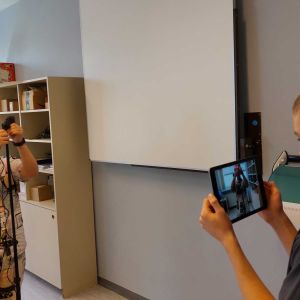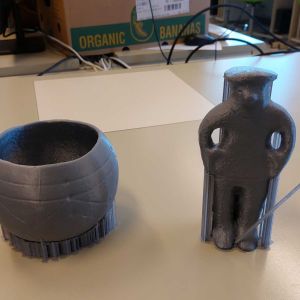New Film Project: Interpretation Workshop "Steinzeitstream"
Jakob Maurer
It's hard to believe how time flies – the students involved in the "United by Crisis?"-project have now reached the fourth and final year of their school. But before they leave school, an extremely important step awaits them: the interpretation and documentation of their research results!
For this purpose, a full-day interpretation workshop was conducted on April 3rd. What particularly delights us: In connection with this, another project proposal has been approved! Its official name is: "Steinzeitstream. Documentation of interdisciplinary research on the archaeological site of Asparn/Schletz".
"Steinzeitstream" is to be understood as an add-on to "United by Crisis?" – the main goal is to create "cool explanatory videos for peers." The learning effect here is not only aimed at the audience of the videos but also at the students themselves because: When you have to explain something, you often understand it better afterwards!
In small groups, the students documented the methods used within "United by Crisis?", spanning the fields of archaeology, analytical chemistry, anthropology, and 3D printing. It all started last year: Since spring, the children have been filming with their own smartphones during all project activities. For the interpretation workshop, they were divided into 8 groups. Introductory literature on the various methods was distributed for preparation. On the day itself, it started with an introduction to the basics of video editing by Andreas Rausch. Modern tablets provided by MAMUZ (many thanks!) were used.
All further steps were carried out by the students themselves (although supervised by the scientists involved in the project): Julia Längauer took two groups on a field trip to Asparn/Schletz; Maria Teschler-Nicola addressed the topic of deficiencies in human skeletal remains; under the supervision of Cornelia Hascher and Jakob Maurer, students created 3D models from photos. Johanna Irrgeher and Michael Schober, on the other hand, supervised the central topic of collaboration with the school: The interpretation of an isotope map to discuss the origin of the individuals found in Schletz, created from soil samples obtained by the students themselves!
The workshop was intense for all participants and lasted until late in the afternoon. The following day, accompanied by Andreas Rausch, a short video was edited from the extensive footage by each group of students. Here too, the principle was important: The selection and editing of the film sequences were (almost unaltered) done by the students themselves!
The videos will be presented at the Science Fair on May 23rd in Klosterneuburg and at the school's closing ceremony at the end of June! However, a preview report already appeared in a local newspaper!















